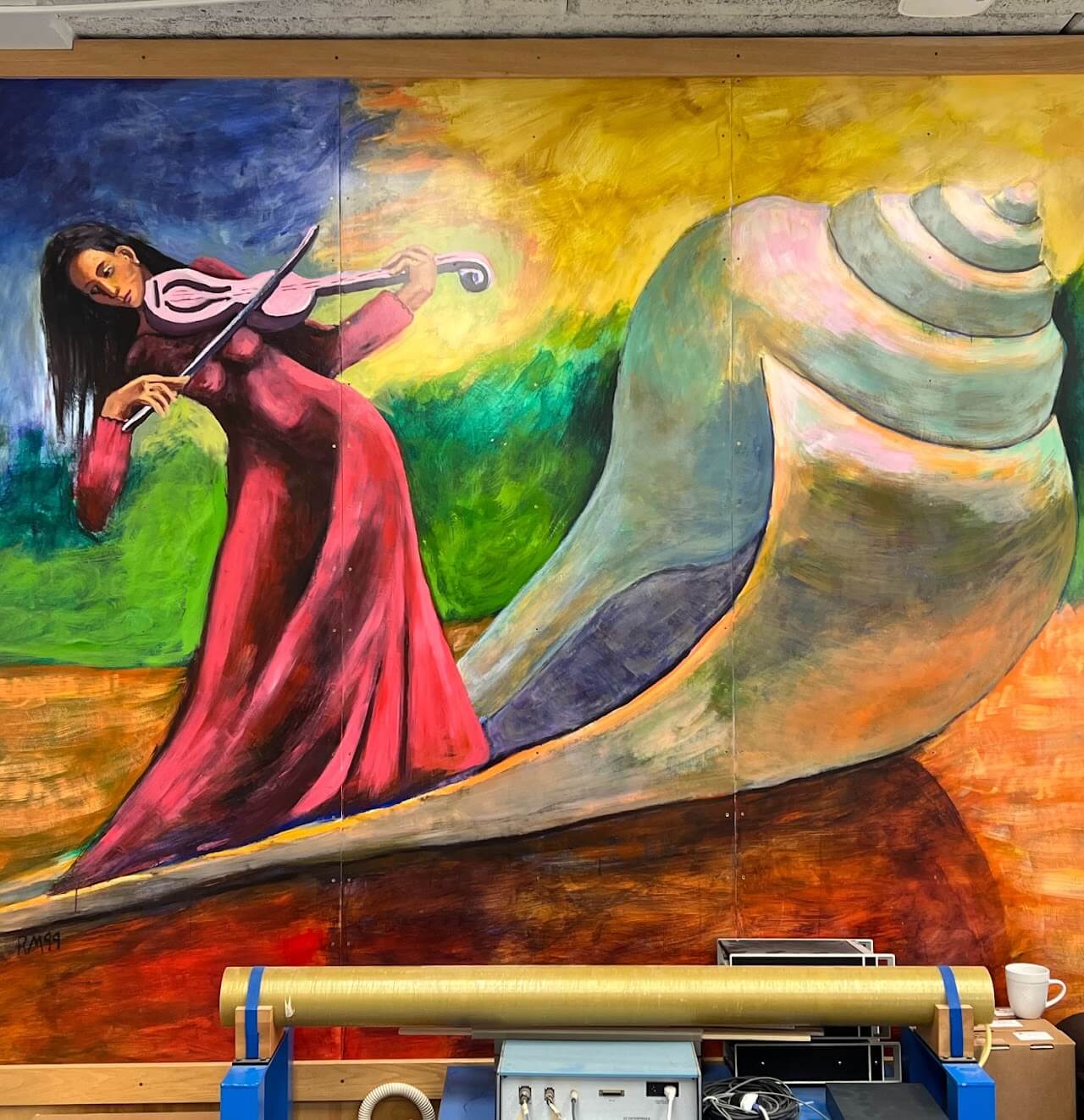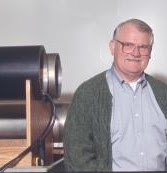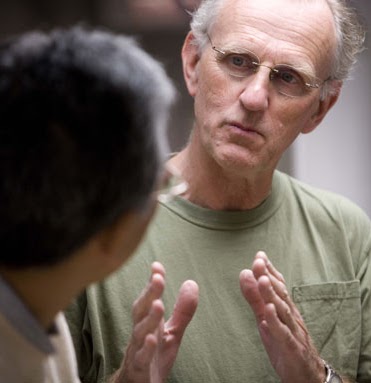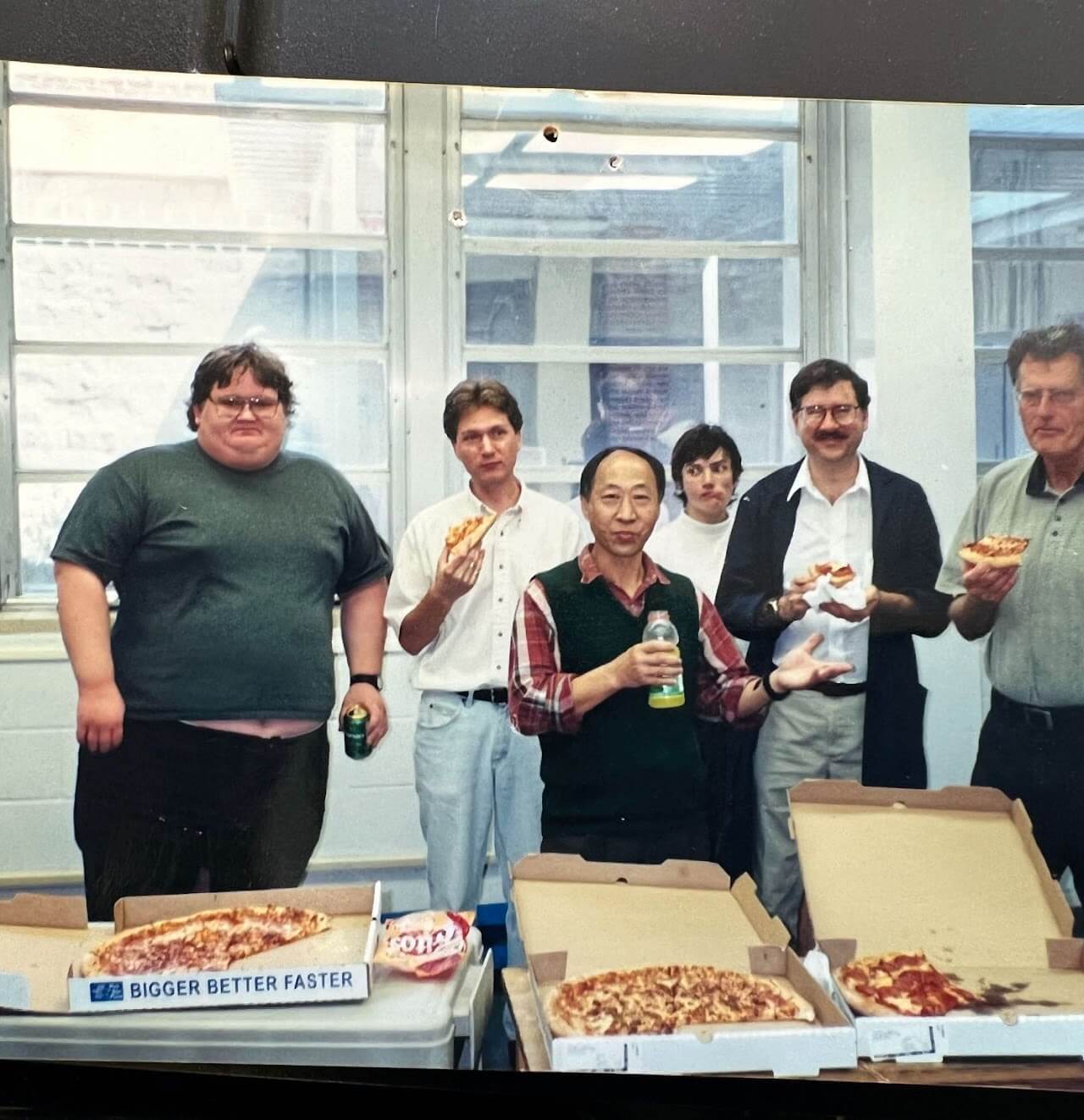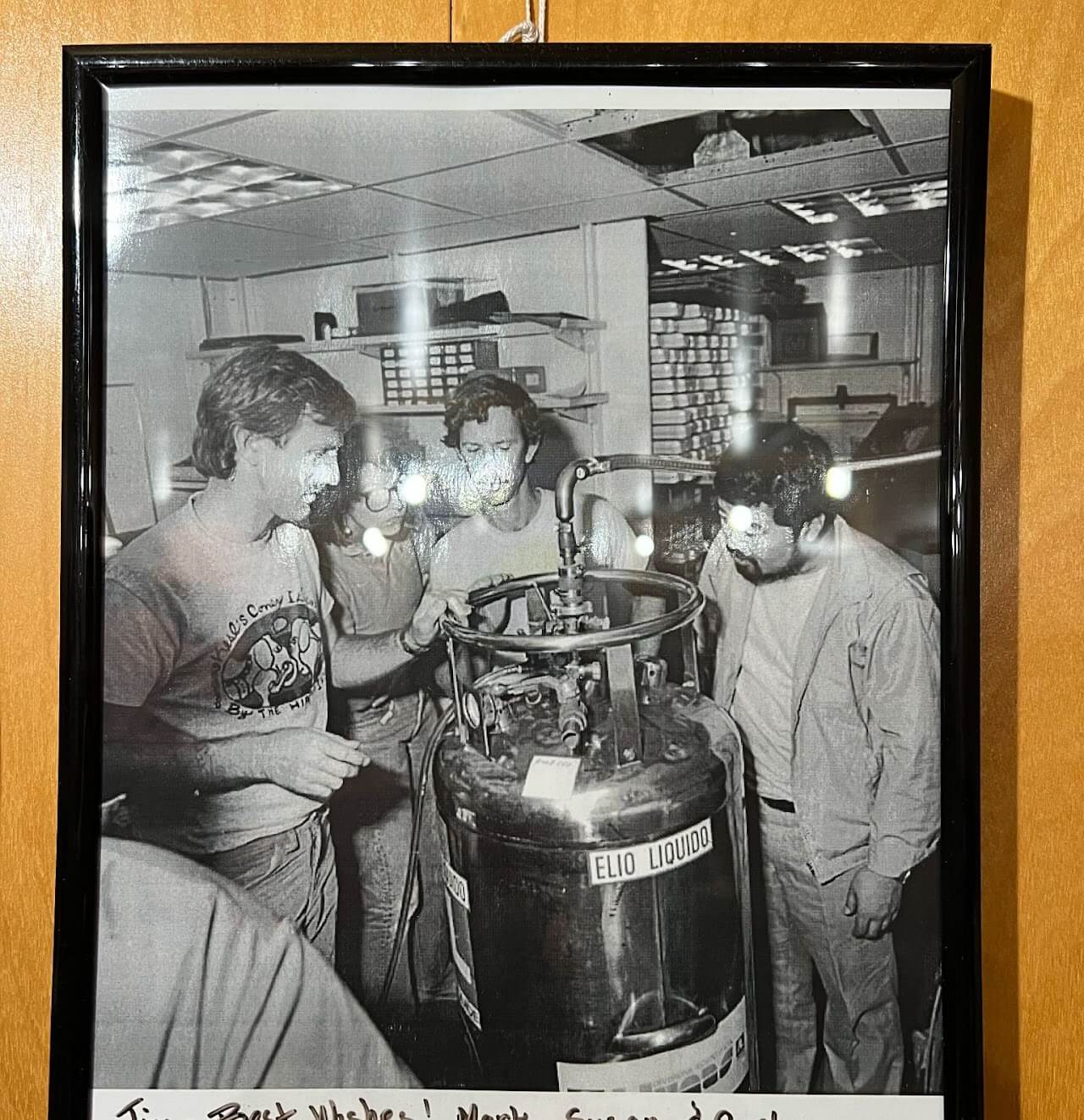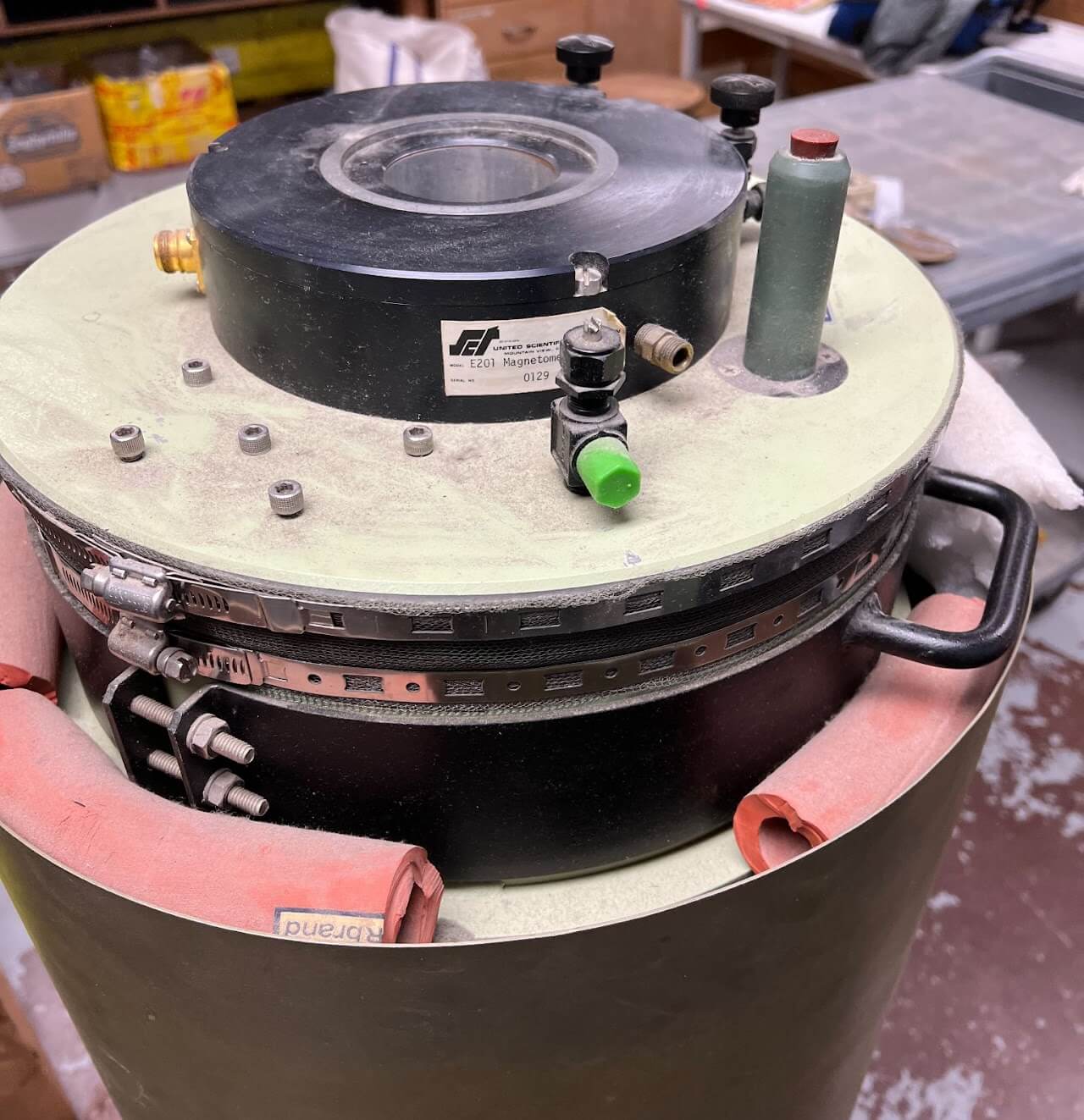The Neil Opdyke Paleomagnetic Laboratory
A brief history
The University of Florida paleomagnetic laboratory was started in the early 1980’s with the arrival of Dr. Neil Opdyke. Neil had spent many previous years at Lamont-Doherty Geological Observatory in New York prior to joining our faculty as Department Chair. Shortly after his arrival, Opdyke hired Dr. James E.T. Channell. They were joined by a host of visitors and graduate students establishing UF as an world-leader in paleomagnetic research. Dr. Kainan Huang came as a visiting scholar in the mid-1980’s and stayed in the lab as a visiting scientist. Bruce McFadden (now retired from the museum of Natural History at UF) proved instrumental in obtaining the first cryogenic magnetometer and field-free room to aid in his studies of biomagnetism.
In the late 1990’s, Geological Sciences moved to its present location in Williamson Hall. This led to a massive exodus of the ‘basement trolls’…geology students so named because the department was housed in the basement of Turlington Hall (once known as General Purpose Building A). A new field-free room was built in 1999 and a mural was commissioned (we paid supplies) by a burgeoning artist named Rubin Heydey Margolin. Entitled “Lady and the Seashell” this represents one of his early works.
In 2002, Dr. Joseph Meert joined the group and expanded the focus of the paleogeographic research group back into the Precambrian. Neil, Jim and Kainan all retired during the 2010’s and the lab came under the direction of Joe Meert. In the latter part of the 2010’s, Dr.’s Courtney Sprain and Robert Hatfield were hired and repopulated the paleomagnetic laboratory and expanded research efforts in paleointensity and environmental magnetism.
Where we are today
The Neil Opdyke Paleomagnetic Lab is a vibrant team of experienced PI’s and students working on projects ranging from Archean/Proterozoic tectonics to recent ocean floor sediments.
